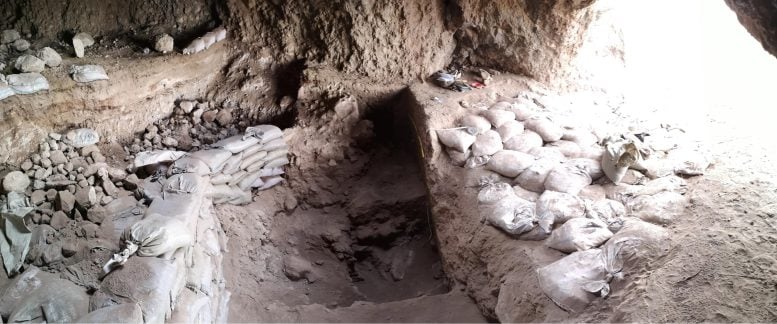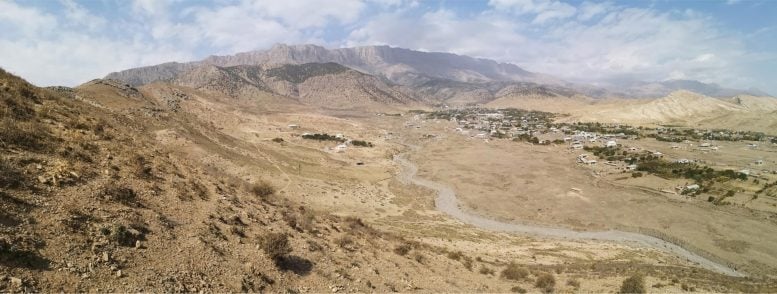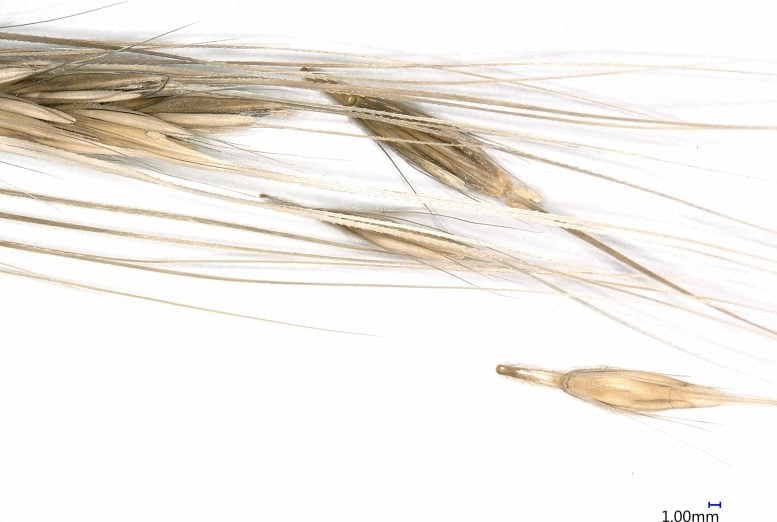
A discovery in Uzbekistan shows that the roots of farming stretched far beyond the Fertile Crescent.
The emergence of agriculture during the Neolithic marked a turning point in the development of human culture. While scholars agree that farming practices arose independently in several regions, including Africa, the Americas, and eastern Asia, the origins of staple crops such as wheat, barley, and legumes have long been traced to the Fertile Crescent. There, a group known as the Natufians began harvesting wild grains around 10,000 years ago.
A recent interdisciplinary study now shows that by at least 9,200 years ago, communities as far north and east as southern Uzbekistan were also harvesting wild barley with sickle blades. This finding indicates that cultural practices leading toward agriculture were more widespread than previously recognized, challenging the idea that farming began solely as a response to climate pressures or population growth.

Excavations at Toda Cave
The discovery comes from excavations at Toda Cave in the Surkandarya Valley of southern Uzbekistan. The work was carried out by an international team led by Xinying Zhou of the Institute of Vertebrate Paleontology and Paleoanthropology in Beijing, under the guidance of Farhad Maksudov, director of the Institute of Archaeology in Samarkand. From the cave’s oldest layers, the researchers recovered stone tools, charcoal, and preserved plant remains.
Archaeobotanical analysis, directed by Robert Spengler of the Max Planck Institute of Geoanthropology, confirmed that the inhabitants collected wild barley from nearby valleys. Additional plant remains included pistachio shells and apple seeds. Examination of the tools—mostly limestone blades and flakes—revealed wear patterns consistent with cutting grasses and other plants, paralleling evidence from sites associated with early agricultural activity.

Rethinking the transition to farming
“This discovery should change the way that scientists think about the transition from foraging to farming, as it shows how widespread the transitional behaviors were,” says Xinying.
“These ancient hunters and foragers were already tied into the cultural practices that would lead to the origins of agriculture,” Spengler adds. “A growing body of research suggests that domestication occurred without deliberate human intent, and the finding that people continually developed the behaviors which lead to agriculture supports this view.”
The research team will continue to investigate how commonplace these behaviors were in Central Asia during this time period. Additionally, the team is further exploring the possibility that these grains represent an early example of cultivation using morphologically wild barley. If the grains were cultivated, it could mean that a sperate origin of farming was being experimented with or that the tradition form the Fertile Crescent spread eastward much earlier than previously recognized. In either case, future research is likely to fill in many gaps in our understanding of the human narrative.
Reference: “9,000-year-old barley consumption in the foothills of central Asia” by Xinying Zhou, Robert N. Spengler, Bahediyoh Sayfullaev, Khasanov Mutalibjon, Jian Ma, Junchi Liu, Hui Shen, Keliang Zhao, Guanhan Chen, Jian Wang, Thomas A. Stidham, Hai Xu, Guilin Zhang, Qingjiang Yang, Yemao Hou, Jiacheng Ma, Nasibillo Kambarov, Hongen Jiang, Farhod Maksudov, Steven Goldstein, Jianxin Wang, Dorian Q. Fuller and Xiaoqiang Li, 25 August 2025, Proceedings of the National Academy of Sciences.
DOI: 10.1073/pnas.2424093122
Never miss a breakthrough: Join the SciTechDaily newsletter.
1 Comment
Some years ago someone found the remnants of a 10 000 year-old wooden shovel/spade in PNG and hence concluded that farming was practiced there as well. And why not? Once people had worked out that grass seeds can form part of one’s diet, farming grasses would be all on as it would mean blokes could stay at home for a couple of days each week to bitch about politics whilst their women baked bread; beats crashing through the scrub every day chasing meat.